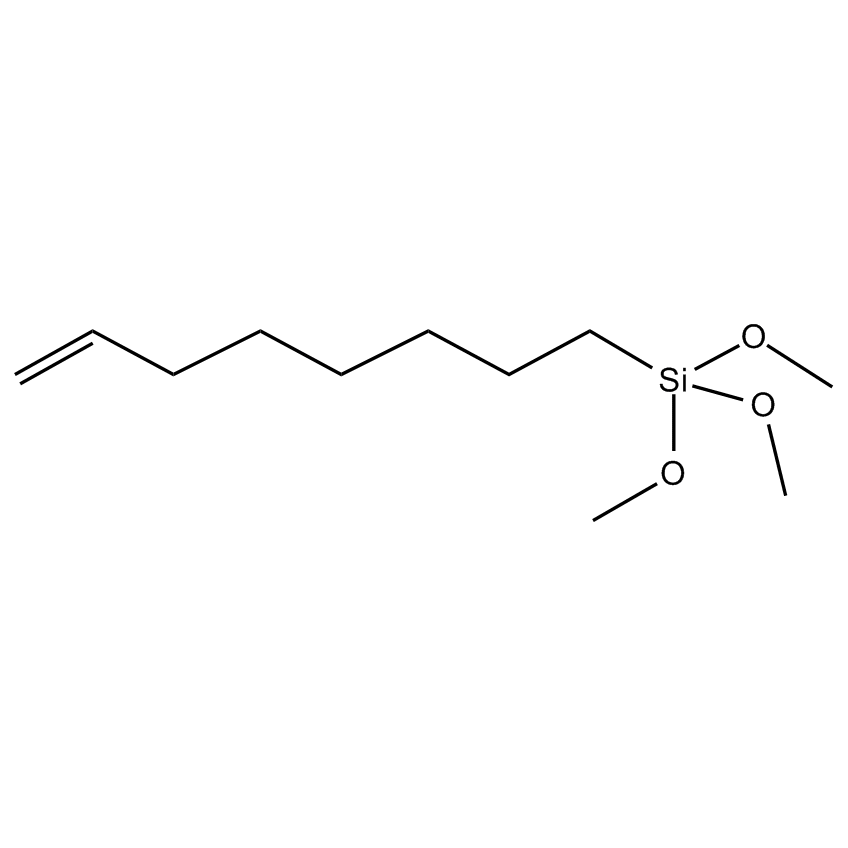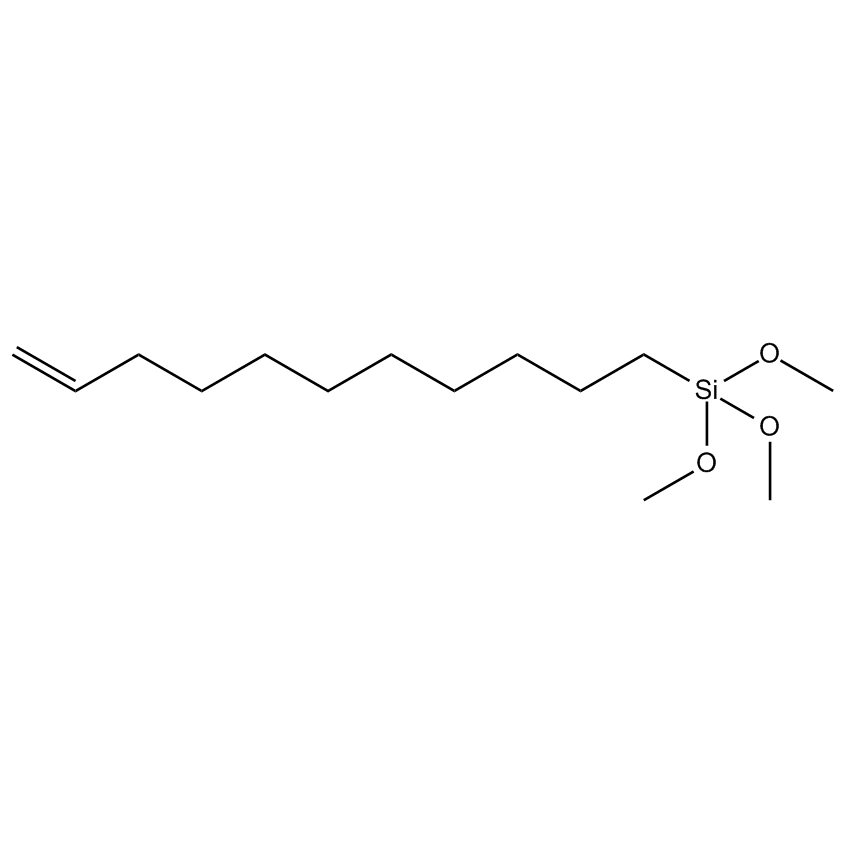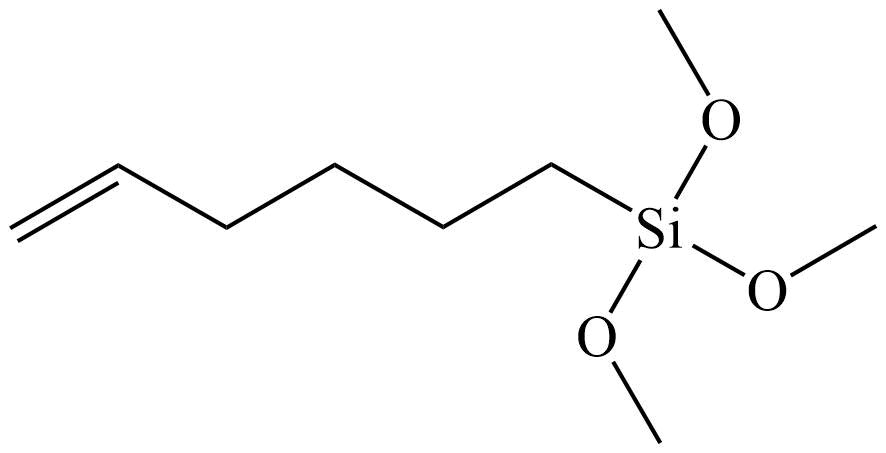Additional Properties
- Einecs Number 610-800-7
- HMIS 3-1-1-X
- Molecular Formula C11H24O3Si
- Molecular Weight (g/mol) 232.39
- Purity (%) 97%
- TSCA Yes
- Boiling Point (˚C/mmHg) 48-49/0.1
- Density (g/mL) 0.94
- Flash Point (˚C) 95 °C
- Refractive Index @ 20˚C 1.4305
Application
Coupling agent for "in situ" polymerization of acrylamide for capillary electrophoresis.1
Employed in stretched DNA fibers for FISH (fluorescent in situ hybridization) mapping.2
Surface treatment for FISH and replication mapping on DNA fibers.3
Reference
1. Cifuentes, A. et al. J. Chromatogr., A 1999, 830(2), 423.
2. Labit, H. et al. BioTechniques 2008, 45, 649.
3. Labit, H. et al. Biotechniques Protocol Guide 2010 (48) DOI 10.2144/000113255.
Safety
Olefin Functional Trialkoxy Silane
Silane coupling agents have the ability to form a durable bond between organic and inorganic materials to generate desired heterogeneous environments or to incorporate the bulk properties of different phases into a uniform composite structure. The general formula has two classes of functionality. The hydrolyzable group forms stable condensation products with siliceous surfaces and other oxides such as those of aluminum, zirconium, tin, titanium, and nickel. The organofunctional group alters the wetting or adhesion characteristics of the substrate, utilizes the substrate to catalyze chemical transformations at the heterogeneous interface, orders the interfacial region, or modifies its partition characteristics, and significantly effects the covalent bond between organic and inorganic materials.
7-Octenyltrimethoxysilane; 8-(Trimethoxysilyl)octene




